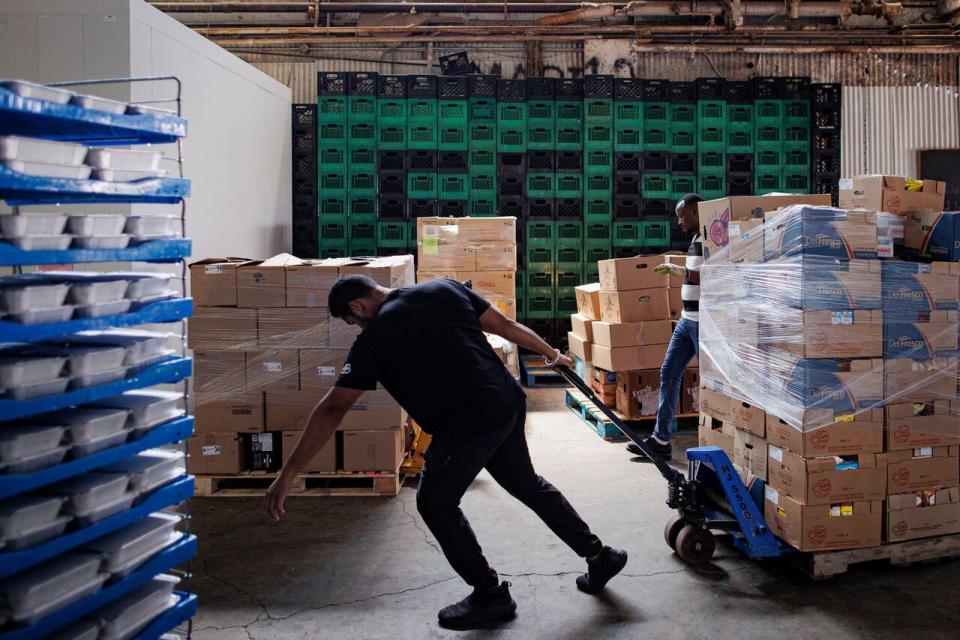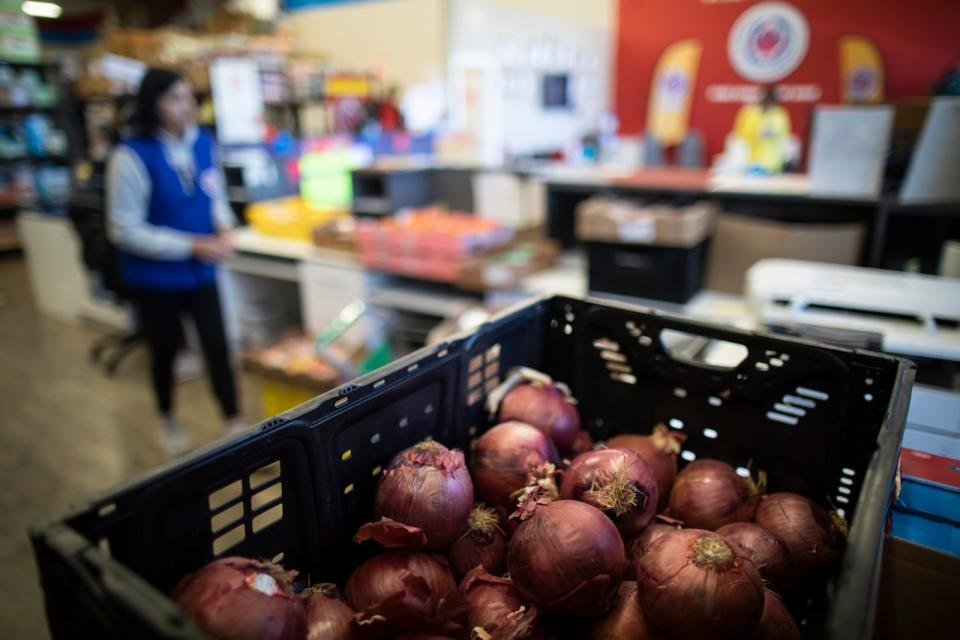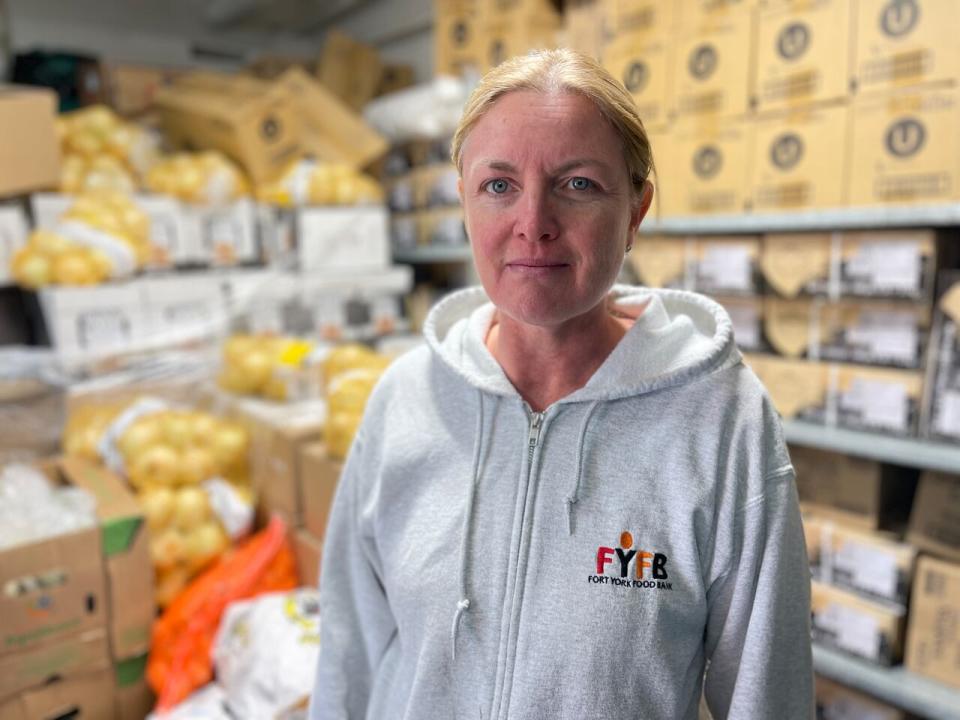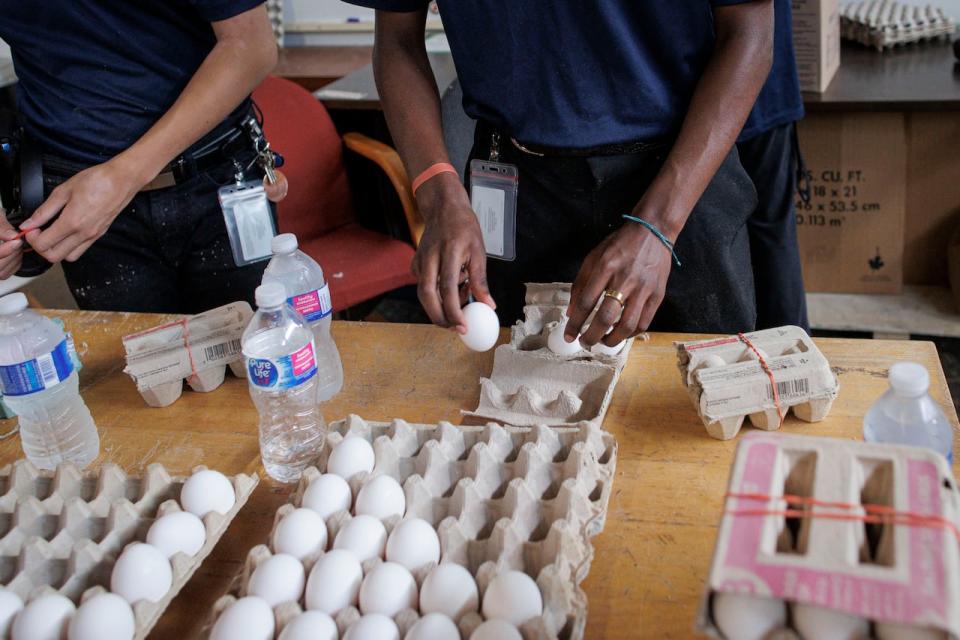Nearly 23% of the Canadian population reported food insecurity in 2022

Nearly nine million Canadians lived in food insecure households in 2022, with 22.9 per cent of the population reporting some form of food insecurity, according to a Statistics Canada report released Friday.
The data agency wrote in its annual Canadian Income Survey that 8.7 million people lived in households that reported some kind of food insecurity.
That was an increase of almost 1.8 million people from the previous year, when the rate was 18.4 per cent. It marked the second consecutive year of increases since the pandemic began.
Statistics Canada measures food insecurity across three categories:
Marginal: Those who worry about running out of food or having a limited selection of food because they can't afford it.
Moderate: Those who had to compromise on the quality and/or quantity of their food because they can't afford otherwise.
Severe: Those who reported skipping meals, reducing how much they ate or going days without food because they can't afford otherwise.
The number of people living in moderately and severely food insecure households increased in 2022, with the moderately impacted proportion rising to 10.9 per cent and the severely impacted proportion rising to six per cent.
"There's no doubt that this challenge we're facing right now isn't hitting all Canadians equally," said Jim Stanford, an economist and the director of the Centre for Future Work in Vancouver.
Single-parent families and "unattached" people under 65 were at an especially high rate of food insecurity, according to the report.
"It's people who can least afford it who have the least protection against higher prices and higher housing costs and so on, and these numbers absolutely confirm it."
"We've seen enormous increases in food prices, we've seen enormous increases in profits in the food industry, the food retail sector. So that is hitting hard, and that to me, is a real worry," said Stanford.
"If we're a rich country like Canada, and we can't assure that everyone has enough food on the table, then clearly we need to do things better."
'Sickening' numbers, says food insecurity researcher
Valerie Tarasuk, who is the lead investigator of the University of Toronto's household food insecurity research program PROOF, told CBC News it was "sickening" to see how much the numbers had gone up, though she was expecting that.
"I'm disappointed. We've known that this has been a period of unprecedented food price inflation, among other things," said Tarasuk, adding that severe food insecurity is linked to negative health outcomes.
"So we knew that people on the bottom end of the economic spectrum were having a hard time. From that perspective, it's not surprising that the numbers have risen, but still, it's heartbreaking to think of that many Canadians living in such difficult circumstances."

Groceries, including food and household items, are pictured at the Guru Nanak Food Bank in Delta, B.C., on April 19. (Ben Nelms/CBC)
The survey, which is an annual report on the income of Canadian individuals and households, showed that the number of Canadians living below the poverty line had increased to 9.9 per cent in 2022 from 7.4 per cent in 2021.
The 2022 numbers show that the poverty rate was inching back up to 2019 levels, when the annual rate was 10.3 per cent.
The median after-tax income of Canadian families and individuals decreased in 2022 to $70,500, though that was partially because government financial programs related to the pandemic were rolled back or ended entirely during the same year.

Julie LeJeune, the executive director of Fort York Food Bank in Toronto, said that over 5,000 people access the food bank's services per week. (Laura MacNaughton/CBC)
Friday is one of the busiest days of the week at Fort York Food Bank in Toronto, where people often line up outside due to the food bank's limited space, said executive director Julie LeJeune in an interview with CBC News.
"Right now, we're at over 5,000 people a week accessing our food bank services," LeJeune said, a demand that the food bank is able to meet through regular donations, a dedicated team of volunteers and help from a food bank network.
She added that she wasn't surprised to see the latest data on food insecurity from StatCan.
"I see it every day here with the number of new clients coming in. That's increasing every week, every month," she said.
One of those clients is Elyssa Gosling, who started using and volunteering at the food bank last August.
"Sometimes you just need the help, and it's OK to ask," Gosling said. "And a lot more people who are in our position are also collecting from food banks who never thought they would have to."
'2022 was a hard year'
Expansions to the eligibility requirements for employment insurance, which had been made during the pandemic as many people lost their jobs or struggled to find work, were removed. That partly led to a decrease in EI recipients, from four million people in 2021 to 2.9 million people in 2022.
It was also the year that Canada began breaking its own records on inflation — reaching 30-plus-year highs in the early months of 2022 — leading the Bank of Canada to launch its interest rate hike campaign.

Volunteers and staff with the Feed Scarborough Food Bank separate eggs into different cartons at the charity’s Toronto warehouse on Aug. 3, 2023. (Evan Mitsui/CBC)
"[The data] certainly confirms 2022 was a hard year for any household trying to balance the books and pay their bills," said Stanford.
But he noted that, before the pandemic, the country was on the right track, having decreased its poverty rate and having made gradual gains in income.
"The current challenges after the pandemic have to be taken in that longer historical context. We have made some progress in Canada, and now I think it's important after the pandemic to get back on that positive track if we can," said Stanford.

 Yahoo Finance
Yahoo Finance 